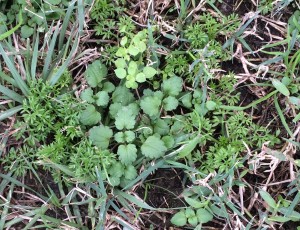Dealing With Weeds After Hurricane Matthew
go.ncsu.edu/readext?430710
en Español / em Português
El inglés es el idioma de control de esta página. En la medida en que haya algún conflicto entre la traducción al inglés y la traducción, el inglés prevalece.
Al hacer clic en el enlace de traducción se activa un servicio de traducción gratuito para convertir la página al español. Al igual que con cualquier traducción por Internet, la conversión no es sensible al contexto y puede que no traduzca el texto en su significado original. NC State Extension no garantiza la exactitud del texto traducido. Por favor, tenga en cuenta que algunas aplicaciones y/o servicios pueden no funcionar como se espera cuando se traducen.
Português
Inglês é o idioma de controle desta página. Na medida que haja algum conflito entre o texto original em Inglês e a tradução, o Inglês prevalece.
Ao clicar no link de tradução, um serviço gratuito de tradução será ativado para converter a página para o Português. Como em qualquer tradução pela internet, a conversão não é sensivel ao contexto e pode não ocorrer a tradução para o significado orginal. O serviço de Extensão da Carolina do Norte (NC State Extension) não garante a exatidão do texto traduzido. Por favor, observe que algumas funções ou serviços podem não funcionar como esperado após a tradução.
English
English is the controlling language of this page. To the extent there is any conflict between the English text and the translation, English controls.
Clicking on the translation link activates a free translation service to convert the page to Spanish. As with any Internet translation, the conversion is not context-sensitive and may not translate the text to its original meaning. NC State Extension does not guarantee the accuracy of the translated text. Please note that some applications and/or services may not function as expected when translated.
Collapse ▲Here in Carteret County we did not receive as much rain from Hurricane Matthew as they received further inland, however, we still received quite a bit. I recently read an article that was distributed to all Extension offices about dealing with weeds after this storm. It poses the question, “Has my pre-emergence herbicide washed away?”. Many landscapers, home gardeners and nurserymen had already applied a pre-emergence herbicide to prevent winter weeds. The concern is that with the heavy rains and flooding that is brought in by a hurricane maybe the chemical has washed away.

Common winter weeds
The typical answer would be, that depends on several factors including soil texture, soil organic matter content, slope and vegetative cover. As soil coarseness increases (more sand) the more likely the herbicide is to wash through the soils. Soils with higher organic matter content will bind the herbicide and hold it in place so it doesn’t move as much. The number of irrigation cycles or rain events after applying the herbicide and the flooding also need to be taken into account. The more wet dry cycles there have been the more likely the herbicide is to be bound by the organic matter in the soil. The greater the slope and the more exposed the soil is (less vegetation) the more likely there is to be erosion carrying away the herbicide that is bound to the soil.
A few other factors that should be looked at as well are, how long was the soil saturated and was there any silt or soil washed onto the property. With may chemicals, if they are submerged in the water they will break down more quickly than if they are simply in moist soil. The longer the chemical is in an anaerobic situation the more quickly it deteriorates. Likewise weed seeds that may have been washed into the area in sediment deposited from flood waters will be fully engorged with water and ready to germinate as soon as they receive enough oxygen from soil drying to do so. These new seeds won’t be exposed to the pre-emergence herbicide that was spread prior to the flooding event.
The sensible answer to the question, do I need to reapply the pre-emergence herbicide? would be yes. Switch to a different mode of action or class of pre-emergence herbicide so resistance doesn’t occur in the seeds that are present and make another application. However, if you are in an area that didn’t receive a lot of rain and very little flooding, you may want to conduct a simple bioassay to see if you really need to make another application of pre-emergence herbicide. A bioassay is a test to see if the soil is retaining enough chemical to effectively control the weeds you want to prevent. To oversimplify you collect some soil and try to germinate seeds in the soil.
For more information about pre-emergence herbicides read this factsheet about weed management concerns after a flood.




